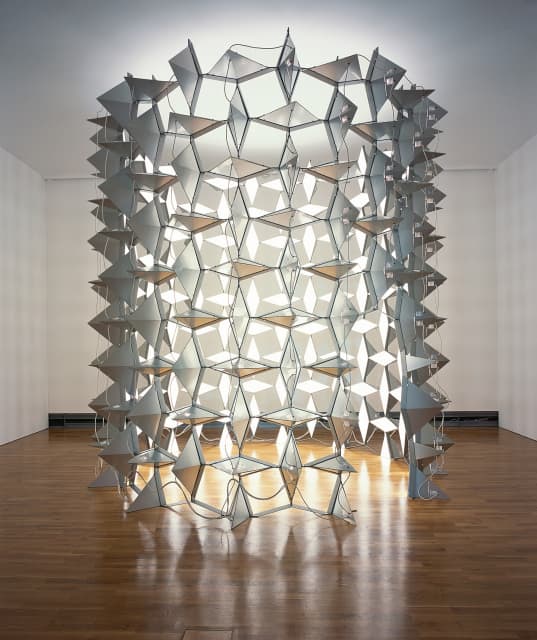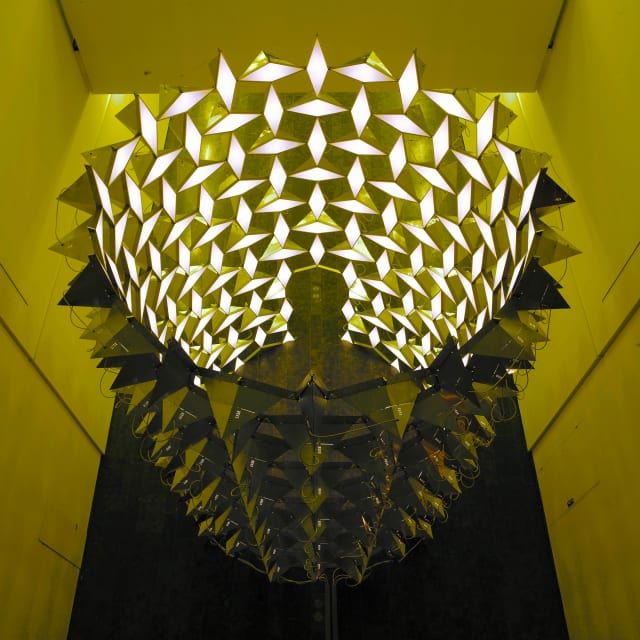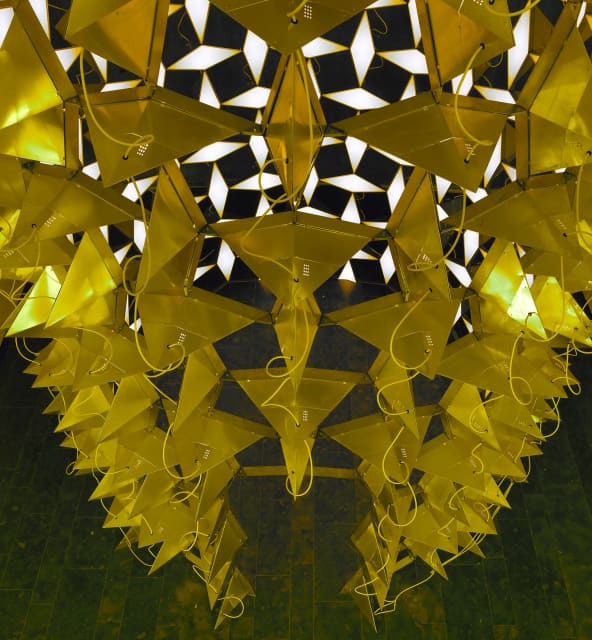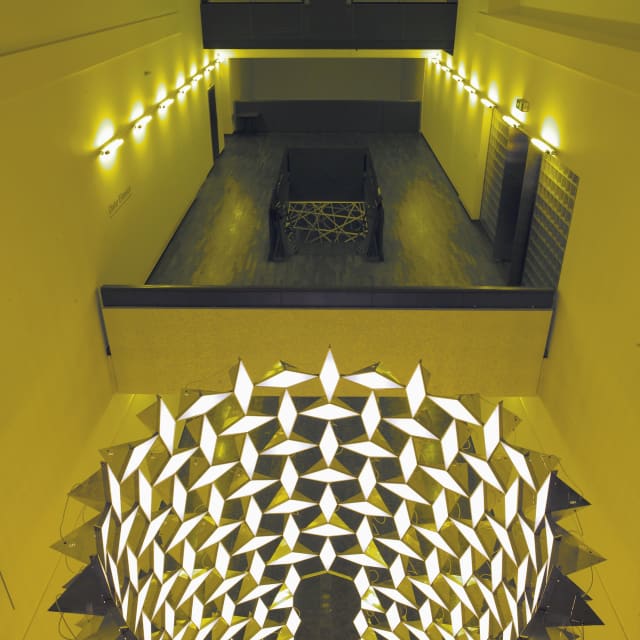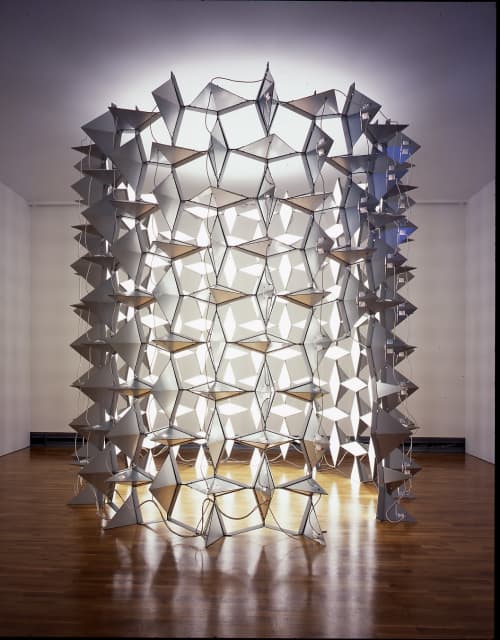The inverted shadow tower is a six-metre-tall structure constructed from rhombic pyramids mounted at right angles to one another within a steel framework. The ambient light of the surrounding space is visible through square openings between the pyramids. The tops of the pyramids point outwards, and their interiors are painted white, covered with acrylic panels, and fitted with lights that illuminate the work from within.
Slowly, the light changes, fading in and out. For viewers inside looking out, the outside slips away and the diamond pattern becomes more prominent as the light increases. Similarly, when the light within the work dims, the outside becomes visible, giving the impression that background and foreground are shifting spatially.
